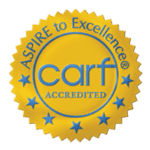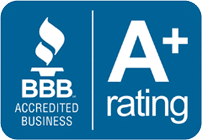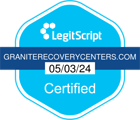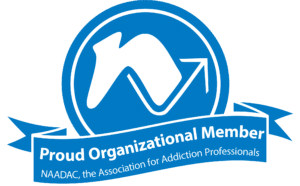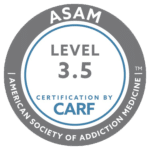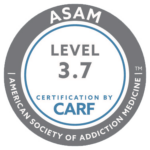Derry Addiction Treatment Resources
One of New Hampshire’s leading communities, Derry is marked by its beautifully manicured, family-friendly parks as well as its ample recreational activities and suburban feel. The town is located in the southeast corner of the state and adjacent to Beaver Lake. Derry is located in close proximity to the largest cities in New Hampshire as Nashua, Manchester and Concord are all within 10 to 30 miles. New England’s major hub, Boston, is just a 45-minute drive away. The town features playgrounds, athletic fields and courts, a public gym, beaches, golf courses and walking trails.
Although life in Derry is centered around family-friendly recreation, Derry, like other cities across New England, is impacted by a darker trend in recreation: drug and alcohol abuse. In 2019, the granite state reported 415 overdose deaths, and is ranked number two in the United States for the highest rate of opioid-related overdose deaths and number one for fentanyl-related overdose deaths.
Fentanyl is an opioid drug that is 50 to 100% stronger than heroin. While cities in New Hampshire generally do not have exceptionally high rates of heroin use, fentanyl is the standout drug that has been linked to many of the state’s drug-related deaths. While methamphetamine abuse is also more common in New Hampshire, drug users often consume fentanyl simultaneously with meth, cocaine and other substances, sometimes unbeknownst to the drug user.
Drug Use in New Hampshire
Most drugs in New Hampshire are trafficked across the border from Massachusetts. Independent drug dealers travel to Boston to obtain drugs and return to Derry and other cities in New Hampshire to sell the drugs. New Hampshire residents also travel to Massachusetts to purchase drugs for personal use.
Everyone who struggles with addiction has a unique story about how they came to be involved with alcohol or drugs. However, there are often recurring themes among very different experiences. Virtually no one who begins using drugs or alcohol does so with a plan of becoming addicted. For some people, drugs and alcohol were a “normal” part of recreation. Others grew up witnessing one or both parents abuse drugs and alcohol. As a result of job stress or ongoing family conflict, some people may attempt to self-medicate with drugs or alcohol. A lack of defined lifelong goals and plans can increase an individual’s receptiveness to using drugs or alcohol. Still others become addicted as a result of having been prescribed an addictive prescription drug while receiving treatment for a legitimate health condition. Regardless of the origins of your addiction, help is within reach.
Drug and Alcohol Treatment Centers
Today, there are more options than ever for those who require the support of an addiction treatment program. Alcohol and drug treatment centers include state, non-profit and locally funded programs that help people with low or no income. There are private centers that offer an array of amenities that may include private chefs, remote locations, social excursions and even spa services depending on your budget or insurance coverage. The bottom line is that people from all walks of life, no matter their income level, may enroll in an alcohol and drug rehabilitation program that works for them, and you are no exception.
Types of Drug and Alcohol Treatment Centers
While rehabilitation centers offer many different amenities and styles of settings for program participants, all treatment centers can generally be categorized as inpatient or outpatient facilities. Both types of treatment have their own advantages and disadvantages. Prior to entering an outpatient or inpatient program, most people who are dependent on alcohol or drugs are required to complete a medical detox.
Most addiction treatment professionals do not recommend going “cold turkey” or attempting to stop using alcohol or drugs without any type of support. As the substance makes its way out of the individual’s body and he or she begins to experience withdrawal symptoms, serious complications may occur. Alcohol and drug withdrawal can easily trigger adverse health events like seizures and other situations that can be life-threatening. Withdrawal also has severe mental, emotional and physical implications that may make it much more difficult for the individual to remain clean and sober. When you receive treatment at a medical detox facility, you will have around-the-clock supervision by counselors and medical clinicians. The medical professionals will give you the mental, physical and emotional support you need to make your detox process safe and more comfortable. While at the detox facility, your primary goal will be to simply focus on allowing the abused substance to leave your system.
Inpatient Treatment Options in New Hampshire
When treatment is administered in a 24/7 setting in which the patient is required to remain onsite at a residential rehabilitation center around the clock, that process is known as inpatient treatment. Clients who receive inpatient treatment can depend on the rehab center to provide all meals, social activities and transportation whenever required. Clinicians administer therapies on site, and in most cases, the treatment center has a kitchen staff, chef or outsourced arrangement that allows clients to receive nutritious meals at the inpatient center. When you participate in an inpatient program, you will have the advantage of receiving treatment away from your daily environment and external stressors that may otherwise trigger you to abuse drugs or alcohol. Inpatient clients do not have to worry about finding transportation to and from their treatment sessions every day
Green Mountain Treatment Center
A secluded treatment center located in the near the scenic Lakes Region and the tranquil White Mountains, Green Mountain Treatment Center provides the relaxing escape you need to refocus and begin your life of recovery from addiction. The gender-separate treatment facility includes an onsite gym, nutritious meals and transportation as needed. The treatment is based on the 12-Step Program in combination with other evidence-based therapies to provide clients a full continuum of care. The campus also includes an onsite sub-acute medical detox center that allows clients to complete each phase of their road to recovery in the same setting.
Counselors and clinicians create an individualized treatment plan for each client. Treatment plans include standard therapies along with holistic therapies like exercise, gym sessions, experiential adventure therapy, yoga and meditation. The center also treats co-occurring mental disorders that may otherwise hinder recovery. In addition to attending therapy sessions, clients may also attend 12-Step meetings, workshops and educational programs. To make treatment more affordable, Green Mountain is in-network for major insurers.
New Freedom Academy
For clients who prefer a smaller, more intimate setting, New Freedom Academy is a gender-segregated, 20-bed facility located in the countryside of Canterbury, New Hampshire. Program participants enjoy a 17-acre, secluded, wooded lot as the perfect backdrop to begin the work of healing. The center also has an onsite chef to prepare nutritious meals and 24/7 medical staff. Medically assisted treatment is available to clients who require it. Clinicians and counselors offer several types of evidence-based therapies, including:
- One-on-one individual therapy
- Cognitive behavioral therapy
- Dialectical behavior therapy
- Grief and loss therapy
- Process groups
- Motivational interviewing
- Treatment for co-occurring mental health conditions
New Freedom Academy also utilizes holistic therapies as part of an approach to treat the whole person. Clients may engage in meditation, yoga and physical exercise to boost endorphins, build confidence and improve overall mental and physical health. Program participants enjoy mini golf, bowling and paintball outings. The recovery center also offers workshops and educational programs, including offsite Family Recovery Workshops each week.
Outpatient Treatment Programs in Derry, New Hampshire
For some people, inpatient treatment may not be compatible with their daily responsibilities. Parents who are unable to find 24/7 childcare are more likely to find it difficult to commit to residential treatment. People who are unable to obtain an extended leave from work are also likely to be less inclined to attend an inpatient program if they plan to keep their job. Fortunately, there are alternative types of treatment programs for individuals who find inpatient treatment logistically challenging.
Clients who find it difficult to attend an inpatient program may choose to receive outpatient treatment. Outpatient facilities offer the structure of an inpatient program with a little more flexibility. Some outpatient programs are designed to be a hybrid between outpatient and inpatient treatment. These programs allow the client to commute to the treatment center daily to receive medication, if necessary, attend counseling sessions and participate in other therapeutic activities. The client may return home in the evening to sleep and return to the treatment center the next day.
Disadvantages to outpatient programs include the need to travel to the treatment center each day and the requirement that the client remain motivated to return each day. The program participant also returns to his or her daily environment where he or she may be exposed to triggers that may increase the risk of relapse.
Recovery Groups
During the course of your treatment program, your recovery center will likely connect you with a community-based recovery group. These groups typically meet at least once a week and provide extra support after you complete your treatment curriculum. Alcoholics Anonymous and Narcotics Anonymous are the largest and most popular examples of these types of groups. However, there are also smaller, more intimate groups. Your treatment staff can also help you find a group in which the members all share a common interest like religion, culture or a shared occupation or hobby. Your group will provide a safe, supportive environment in which you can socialize with like-minded people who have been living a life of recovery for varying amounts of time. Meeting with your group will help you navigate life after treatment and provide you with a community of people who understand your hopes, dreams and challenges even if you feel like other people in your life who have never struggled with addiction are unable to relate.
Contact Us Today
If you are considering seeking treatment for alcohol or drug abuse or addiction in Derry, help may be closer than you think. Beginning a life of recovery may seem like a daunting task. You may wonder how you will fit treatment into your schedule or if you can really remain clean when it’s over. These questions are normal. Addiction counselors are waiting to answer all your questions and help you determine which type of program may be most suitable for you. The first step toward recovering from alcohol or drug addiction is to simply reach out and ask for help. An addiction counselor will meet you where you are and help you find your way to the clean and sober life you deeply desire.


